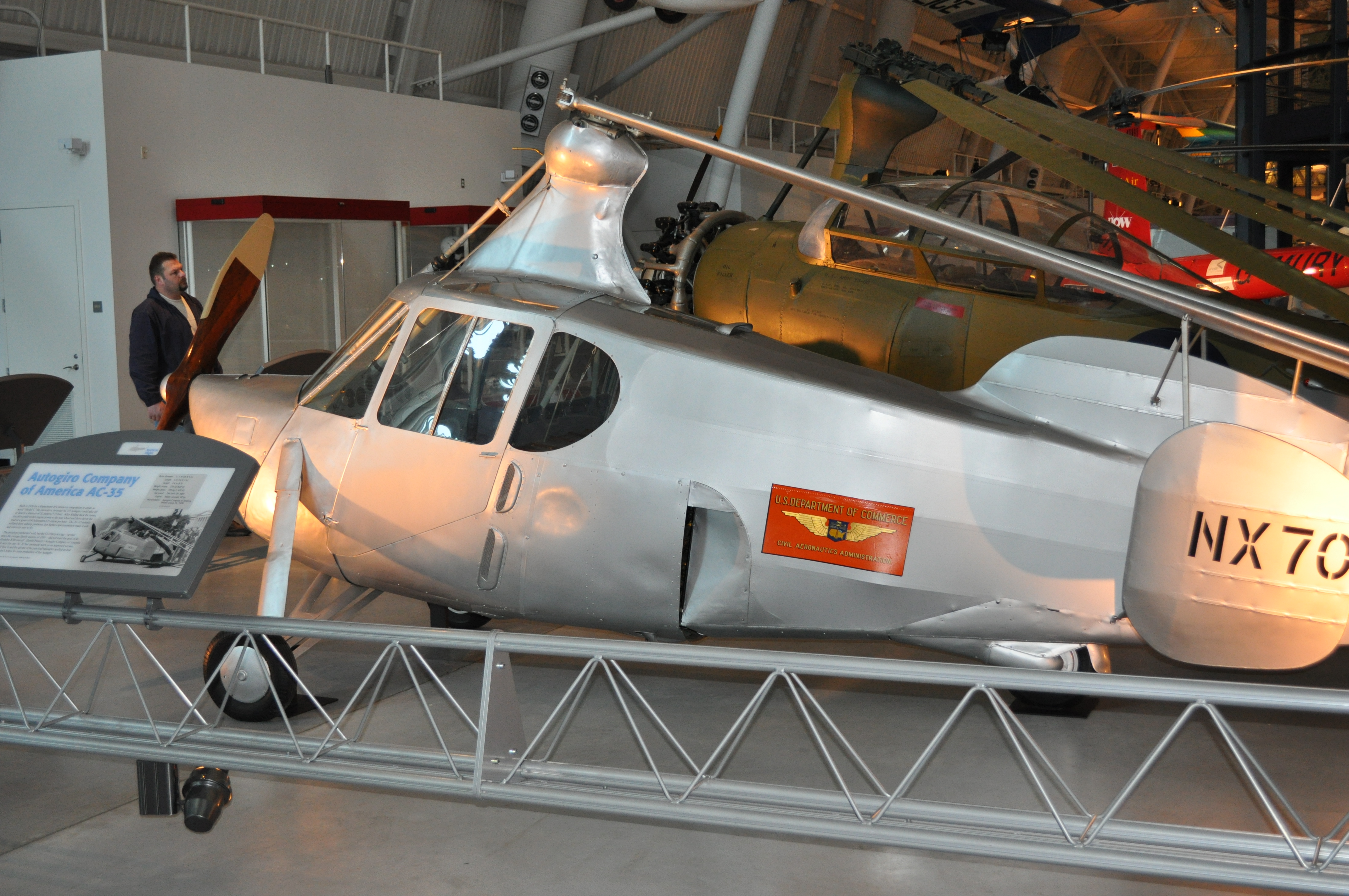Autogiro AC-35 on:
[Wikipedia]
[Google]
[Amazon]
The Autogiro Company of America AC-35 was an early attempt to make a roadable aircraft in the United States during the 1930s. Although it was successfully tested, it did not enter production; a 1960s attempt to revive the aircraft in a non-roadable version also failed to achieve success.
 The aircraft design process started in 1935. The Experimental Development Section of the Bureau of Air Commerce contracted the building of a roadable aircraft based around an PA-22 autogyro from ACA's parent company,
The aircraft design process started in 1935. The Experimental Development Section of the Bureau of Air Commerce contracted the building of a roadable aircraft based around an PA-22 autogyro from ACA's parent company,

Aerofiles – Autogiro
"Tilt Rotor Steers New Autogiro" – ''Popular Science Monthly'', October 1933, conceptual drawing based on information supplied by manufacture
{{DEFAULTSORT:Autogiro Company Of America Ac-35 Individual aircraft in the collection of the Smithsonian Institution Single-engined tractor autogyros Roadable aircraft 1930s United States experimental aircraft Pitcairn aircraft Aircraft first flown in 1936
Design and development
Pitcairn Autogiro Company
The Pitcairn Aircraft Company was an American aircraft manufacturer of light utility aircraft. An early proponent of the autogyro, the company, later known as the Autogiro Company of America among other names, remained in business until 1948. ...
. The vehicle could fly at high speed in the air, and drive at up to on the ground with its rotors stowed. Six other companies were contracted to produce a roadable aircraft, but the AC-35 was the only one that met all the requirements.
The AC-35 had side-by-side seating with a small baggage compartment. The fuselage was a combination of steel tube in front, and wood construction in the tail with fabric covering overall. The engine was rear mounted with a shaft driven forward propeller. The vehicle had three equal size wheels (two in front, one in the rear). The rear wheel was shaft driven from the engine and the front wheels provided steering.
Operational history
On March 26, 1936, the AC-35 was flown by test pilot James G. Ray with counter rotating propellers. These were later replaced with a single conventional propeller arrangement. On October 2, 1936, Ray landed the AC-35 in a downtown park inWashington, D.C.
)
, image_skyline =
, image_caption = Clockwise from top left: the Washington Monument and Lincoln Memorial on the National Mall, United States Capitol, Logan Circle, Jefferson Memorial, White House, Adams Morgan, ...
, where it was displayed, On October 26, 1936, The aircraft was converted to roadable configuration. Ray drove it to the main entrance of the Commerce Building where it was accepted by John H. Geisse, chief of the Aeronautics Branch. It was driven to Bolling Field The origins of the surname Bolling:
English: from a nickname for someone with close-cropped hair or a large head, Middle English bolling "pollard", or for a heavy drinker, from Middle English bolling "excessive drinking".
German (Bölling): from a ...
for additional testing and review by Hap Arnold
Henry Harley Arnold (June 25, 1886 – January 15, 1950) was an American general officer holding the ranks of General of the Army and later, General of the Air Force. Arnold was an aviation pioneer, Chief of the Air Corps (1938–1941), ...
.
The aircraft was tested by the Autogiro Company of America at Pitcairn Field until 1942. In 1950 the Bureau of Air Commerce transferred the AC-35 to the Smithsonian Institution
The Smithsonian Institution ( ), or simply the Smithsonian, is a group of museums and education and research centers, the largest such complex in the world, created by the U.S. government "for the increase and diffusion of knowledge". Founded ...
.
Variants
In 1961, Skyway Engineering Company. Inc. in Carmel, Indiana, licensed the AC-35 with an intent to produce a non-roadable variant, powered by a 135-hp Lycoming O-290-D2Bs engine. One example was built and test flown out of Terry Field inIndianapolis
Indianapolis (), colloquially known as Indy, is the state capital and most populous city of the U.S. state of Indiana and the seat of Marion County. According to the U.S. Census Bureau, the consolidated population of Indianapolis and Marion ...
, but did not go into production as the company failed.

Specifications (AC-35)
See also
Notes
External links
Aerofiles – Autogiro
"Tilt Rotor Steers New Autogiro" – ''Popular Science Monthly'', October 1933, conceptual drawing based on information supplied by manufacture
{{DEFAULTSORT:Autogiro Company Of America Ac-35 Individual aircraft in the collection of the Smithsonian Institution Single-engined tractor autogyros Roadable aircraft 1930s United States experimental aircraft Pitcairn aircraft Aircraft first flown in 1936